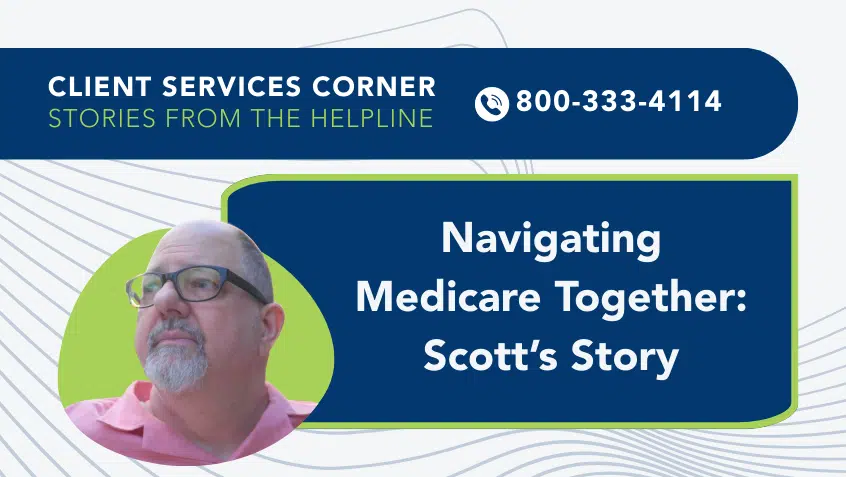Join Us Live for a Discussion on Medicare, Democracy, and the Future of Health Care
Medicare Advantage 101: A Policy Series From the Medicare Rights Center

This week, the Medicare Rights Center released Medicare Advantage 101, a new set of fact sheets and videos that delve into the program’s history and current status. These resources highlight the importance of strengthening Medicare and the enrollee experience by improving Medicare Advantage (MA) payment accuracy and plan accountability.
People with Medicare can choose to receive their Part A (inpatient/hospital insurance) and Part B (outpatient/medical insurance) benefits directly from Medicare, or from a private MA plan that contracts with Medicare. MA enrollment and costs have surged in recent years, along with questions about plan quality, denials of care, transparency, and financing—systemic problems that threaten enrollee health and Medicare sustainability.
A driving premise behind MA was its potential to save Medicare dollars. But it never has. Instead, Medicare spending is higher and growing faster for MA enrollees than for those with OM. The resulting overpayments reward insurers with greater profits but penalize everyone else. They raise Part B premiums for all beneficiaries, lead to increased costs for taxpayers, and contribute to the erosion of the Part A Trust Fund. Absent correction, these impacts will only deepen.
The Medicare Advantage 101 series examines these issues and more, laying the groundwork for broad engagement, critical conversations, and needed reforms. Topics include:
Medicare Advantage History: Legislative Milestones
As established in 1965, Medicare included Inpatient/Hospital insurance (Part A) and Outpatient/Medical insurance (Part B) and paid providers directly on a fee-for-service basis. Together, these two parts are known as Original Medicare (OM). The program has seen many legislative reforms over the years, including the addition of MA (Part C) in 1996. However, private insurers played a role in the lives of Medicare enrollees long before then. In this fact sheet and video, we trace that evolution.
Comparing Original Medicare and Medicare Advantage
Around half of people with Medicare get their health coverage from Original Medicare (OM) and the other half from MA. Individual needs, preferences, and priorities typically guide these enrollment choices. In this fact sheet and video, we outline key considerations beneficiaries often keep in mind when deciding between the two coverage pathways.
The Beneficiary Experience with Medicare Advantage Enrollment and Access to Care
In our experience, many people can struggle to choose an MA plan that best meets their needs. For both newly eligible enrollees and those re-evaluating their options, the MA plan comparison process can be complex and burdensome, undermining active, informed coverage choices. Once enrolled, these decisions and MA-specific features—such as restrictions on providers and barriers to services—may limit enrollee access to care in unanticipated and harmful ways. Learn more about the beneficiary experience with MA in this fact sheet and video.
Payments to Medicare Advantage: The Methodology
Under OM, Medicare pays providers a fixed rate for each service rendered to enrollees. By contrast, Medicare pays MA plans a fixed monthly rate for each enrollee; the plans then pay providers to deliver care. The MA payment rates are set annually through a complicated series of determinations and adjustments that have significant bearing on Medicare financing. In this fact sheet and video, we review those processes and impacts.
The Overpayment Cycle: Payments to Medicare Advantage
Flaws in the MA payment formula yield inflated plan payments that grow with enrollment. Plans use these additional dollars to offer services OM does not cover. They heavily and successfully market these “supplemental benefits,” boosting enrollment and triggering even more overpayments. Plans invest those funds to attract more enrollees, and the cycle begins again. This fact sheet and video explain this harmful pattern and what it means for Medicare solvency.
Promise and Pitfalls of Dual Eligible Special Needs Plans (D-SNPs)
Like other Medicare enrollees, people who are dually eligible for Medicare and Medicaid can choose to receive their Part A and Part B benefits through OM or from a private MA plan. Some who select MA may have access to a Dual Eligible Special Needs Plan (D-SNP), which is an MA plan exclusive to people who are enrolled in both Medicare and Medicaid. In this fact sheet and video we examine D-SNPs’ not-yet-realized potential for care integration and delivery.
To learn more about MA and why reforms are needed, view the Medicare Advantage 101 policy series.
This series was produced with support from Arnold Ventures.
Show Comments
We welcome thoughtful, respectful discussion on our website. To maintain a safe and constructive environment, comments that include profanity or violent, threatening language will be hidden. We may ban commentors who repeatedly cross these guidelines.
Help Us Protect & Strengthen Medicare
Donate today and make a lasting impact
More than 67 million people rely on Medicare—but many still face barriers to the care they need. With your support, we provide free, unbiased help to people navigating Medicare and work across the country with federal and state advocates to protect Medicare’s future and address the needs of those it serves.
The Latest
Most Read
Add Medicare to Your Inbox
Sign up to receive Medicare news, policy developments, and other useful updates from the Medicare Rights.
View this profile on InstagramMedicare Rights Center (@medicarerights) • Instagram photos and videos









